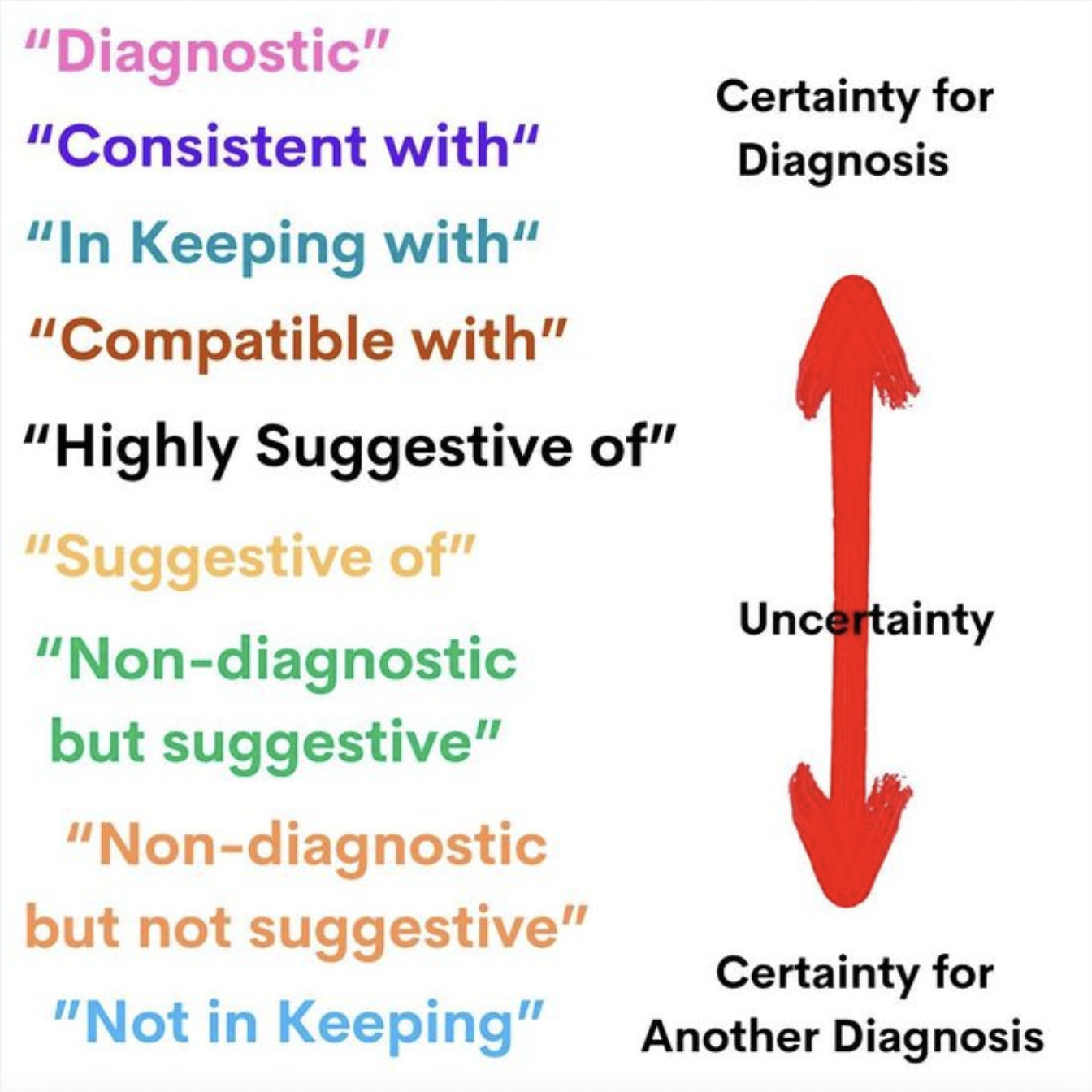Uncertainty of the Scalp Biopsy Report: A Closer Look at Language
The Language of Certainty When Interpreting Scalp Biopsy Reports
Reading a scalp biopsy report sometimes requires a bit of skill in order for the clinician to decipher how confident the pathologist is with the diagnosis given in the report.
A biopsy report is never ever the final answer but rather one of the pieces of the puzzle. One must combine the results from the biopsy report as well as the information obtained from the clinical history and examination in order to make the “final diagnosis.”
The pathologist’s degree of certainty has an important role as the clinician goes about weighing all the pieces of evidence obtained on history, obtained on examination and obtained from the biopsy. A pathology report whose findings are “diagnostic” carries more significance than a report that is “suggestive.”
Some specimens are simply not diagnostic. Some specimens are not diagnostic because the disease process is not well developed at the site of the biopsy. Some biopsies are simply taken from a poorly chosen site which limits the availability of useful information.
Sometimes the pathologist seeks to convey the degree of diagnostic certainty with use of various medical terms. The clinician must pay careful attention to the language chosen by the pathologist.
It can be a joy to read a biopsy report but it can sometimes be a source of confusion. One should always be well hydrated, well rested and well fed before attempting to read any report.
It is helpful for the clinician performing the biopsy to provide as much relevant clinical information to the pathologist as possible. This helps the pathologist render an opinion on the degree of certainty in the diagnosis.
This article was written by Dr. Jeff Donovan, a Canadian and US board certified dermatologist specializing exclusively in hair loss.

